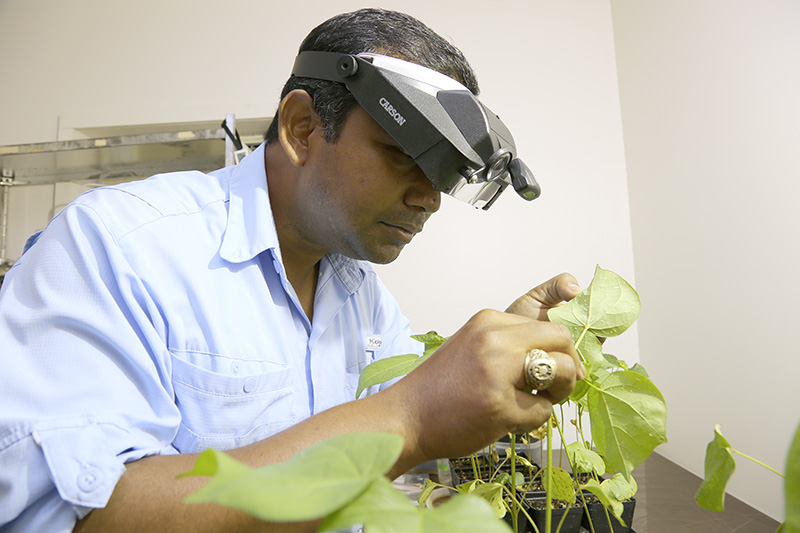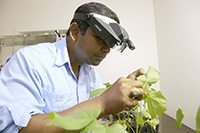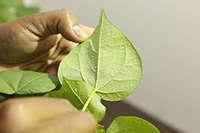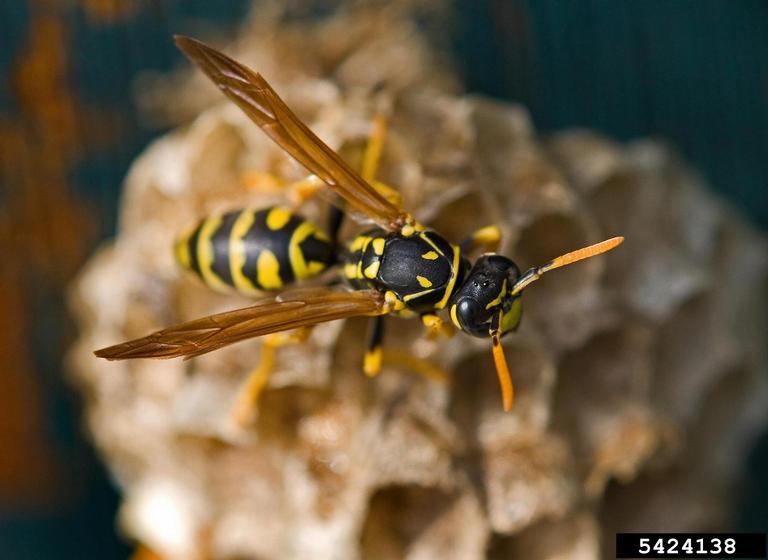More than 800 miles of roadway, spanning from Dothan, Alabama, to Vidalia, Georgia, serve as a testing ground for University of Georgia whitefly research.
Apurba Barman, a postdoctoral researcher working with UGA College of Agricultural and Environmental Sciences (CAES) entomologist Michael Toews, travels with colleagues once a week and checks whitefly traps that are set up every 5 miles across south Georgia. They’re studying the development of whitefly populations across the landscapes where the pests were a major problem in 2017.
So far this year, whiteflies have not posed a serious problem for Georgia farmers. Freezing temperatures in January helped to kill the host plants that serve as a stronghold for whiteflies to survive from one season to the next. These include weeds and leftover vegetable plants and cotton plants that were not destroyed after harvest season. The cooler temperatures were spread out over several weeks and killed adult whiteflies that emerged during that time.
“I would say that this is a more typical year. We still have to get through the fall because that’s typically when the whitefly populations get to their largest numbers,” Toews said.
The research team has set traps up in 24 different counties in locations as far north as Cordele, Georgia, as far east as Vidalia, as far south as Thomasville, Georgia, and as far west as Dothan.
The scientists hope to discover whitefly hot spots where the pests are more problematic, determine whether adjacent crops indicate increasing whitefly populations, and pinpoint the amount of time it takes for whitefly populations to grow from a localized infestation to a widespread problem.
“First, if we see whitefly buildup in certain locations in a county, we need to observe what the crops are around it. Are these crops contributing to these populations? What can be done to prevent population increases?” Barman said. “Once we have this information out, the county agent or consultant can go out there and check what fields might have more whiteflies and work with the producers to manage those populations.”
Although research is ongoing, Toews anticipates whitefly populations will start to increase where cucurbit crops, like cucumbers and melons, grow next to cotton fields. This setup serves as a bridge to help the whiteflies become more embedded in Georgia’s agricultural production in the fall.
“When you think about our major hosts of cole crops, cucurbits and cotton, we’ve got one of those in the field year-round in Georgia. We provide the habitat for them to survive,” said Toews.
Producers in Georgia grow cole crops, like broccoli, kale and cabbage, from September through May. Cucurbits grow in the summer, and cotton grows in the early fall. All of these crops serve as host plants for whiteflies.
Whiteflies can also transmit cucurbit leaf crumple virus and cucurbit yellow stunting disorder virus. According to UGA crop loss estimates for fall 2017, these viruses caused between 30 and 50 percent of crop loss in squash and cucumbers and nearly 80 percent of crop loss in snap beans.
Bill Brim suffered a financial loss because of significant whitefly pressure last year. He owns Lewis Taylor Farms in Tifton, Georgia, and farms 500 acres of cotton and 6,000 acres of vegetables every year. He said that, in 2017, they planted the same amount of squash acreage as in previous years, but his farms packed only 88,000 boxes compared to 388,000 in 2015.
“The dramatic decrease in production cost us lots of money because of the whitefly and the viruses they produce and vector to the squash and cucumber plants,” Brim said.
UGA Cooperative Extension vegetable pathologist Bhabesh Dutta and UGA Extension vegetable specialist Tim Coolong screen different cultivars; germplasms; and advance breeding lines of squash, snap beans and zucchini in search of cucurbit leaf crumple virus resistance.
UGA entomologist Babu Srinivasan studies long-term management of whiteflies. His research at the UGA Tifton and Griffin campuses focuses on identifying weak links in the virus transmission cycle and developing strategies for efficient management of whiteflies and viruses.
“The losses due to these viruses can be severe. Several squash and bean fields were literally plowed under in 2017,” Srinivasan said.
After a devastating year of whitefly pressure in 2017, UGA formed a team of research and Extension specialists to develop recommendations for Georgia producers. The team includes entomologists, horticulturists and plant pathologists. The team is surveying Georgia crops and weeds for host preference and reproductive potential, and it’s developing coordinated integrated pest management programs by examining cultivar resistance, cultural approaches and insecticide use patterns.
“This project is unique … because it involves vegetable growers and row crop growers, two communities of people who, traditionally, haven’t worked together to solve the same challenges in production,” Toews said.
He believes that Georgia farmers will encounter whiteflies every year, but the severity will vary from year to year. During the 2016-2017 crop season, warmer temperatures during December, January and February allowed whiteflies to overwinter on crops and become a serious agricultural pest during the early summer.
“Last year, nothing went in our direction. We didn’t have a lot of freezing weather to kill hosts,” Toews said. “We had abnormally high temperatures during the winter and spring, which allowed for an additional generation of whiteflies to develop.”
Whiteflies are difficult to control because of their prolific reproductive cycle. A female can lay between 150 and 200 eggs, and it only takes those whiteflies two to four weeks to mature into the adult stage and begin reproducing.
“There is tremendous reproductive potential, much more than just about any insect that we work with in our agronomic crops,” Toews said.
For more information about whiteflies, growers can contact their local Extension office or 1-800-ASK-UGA1.









